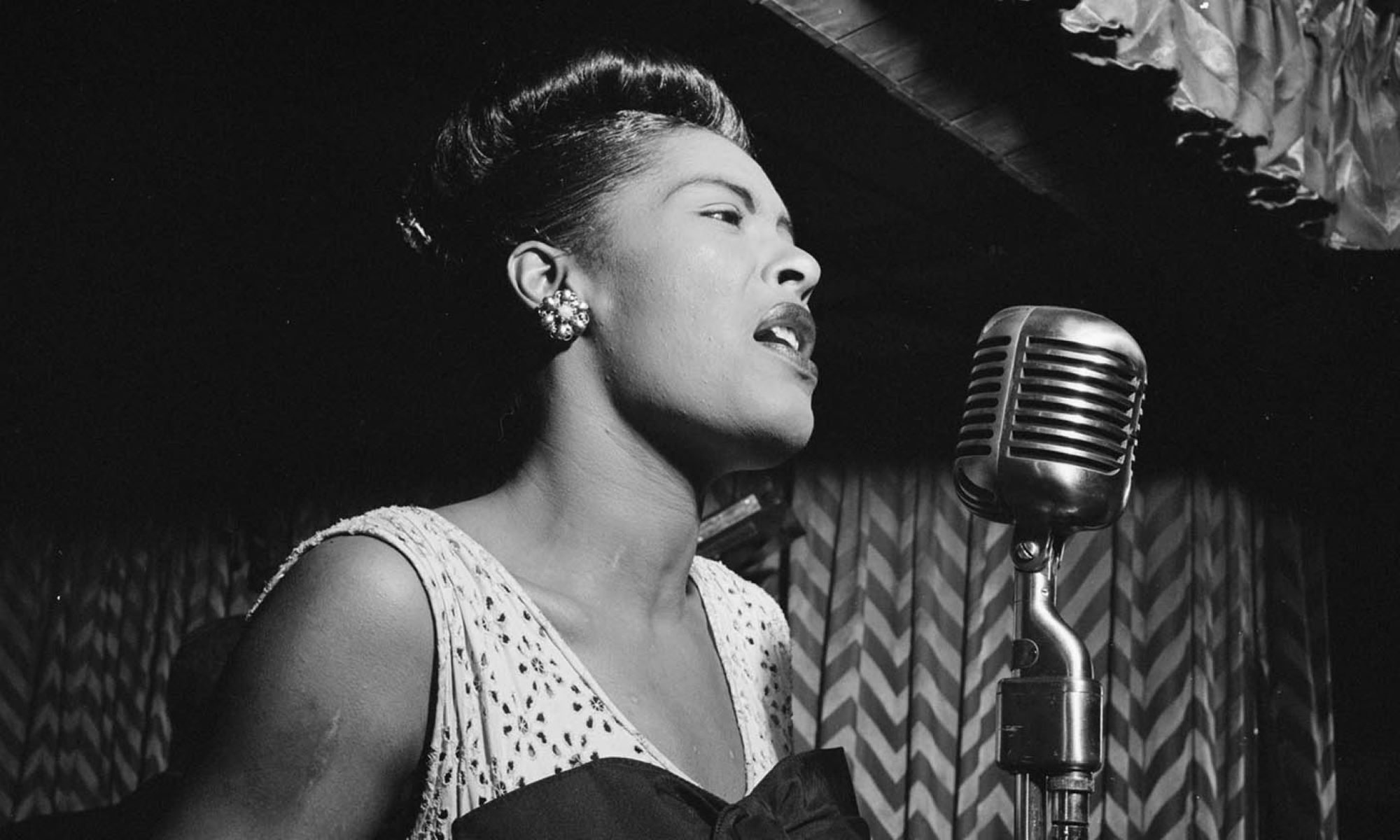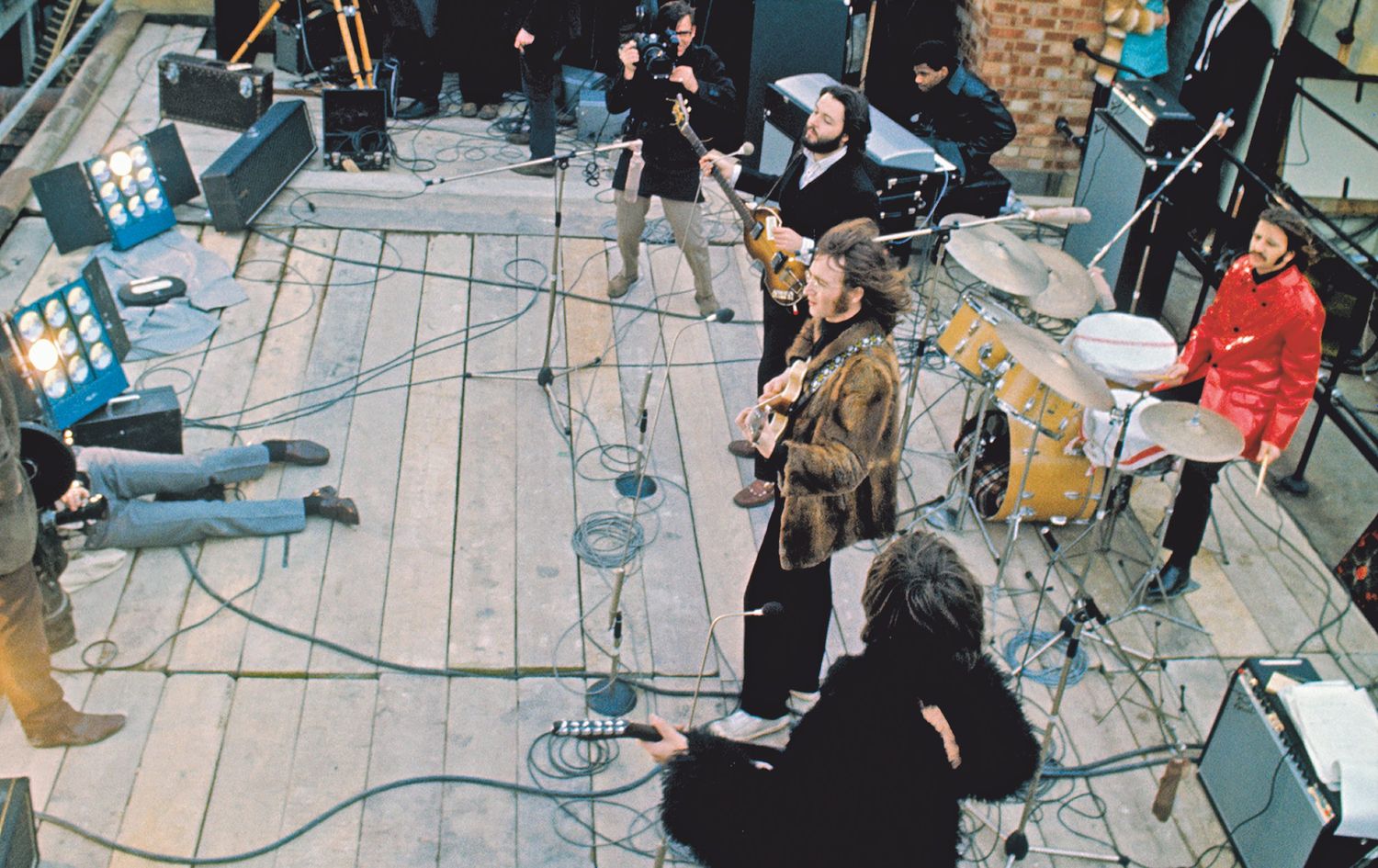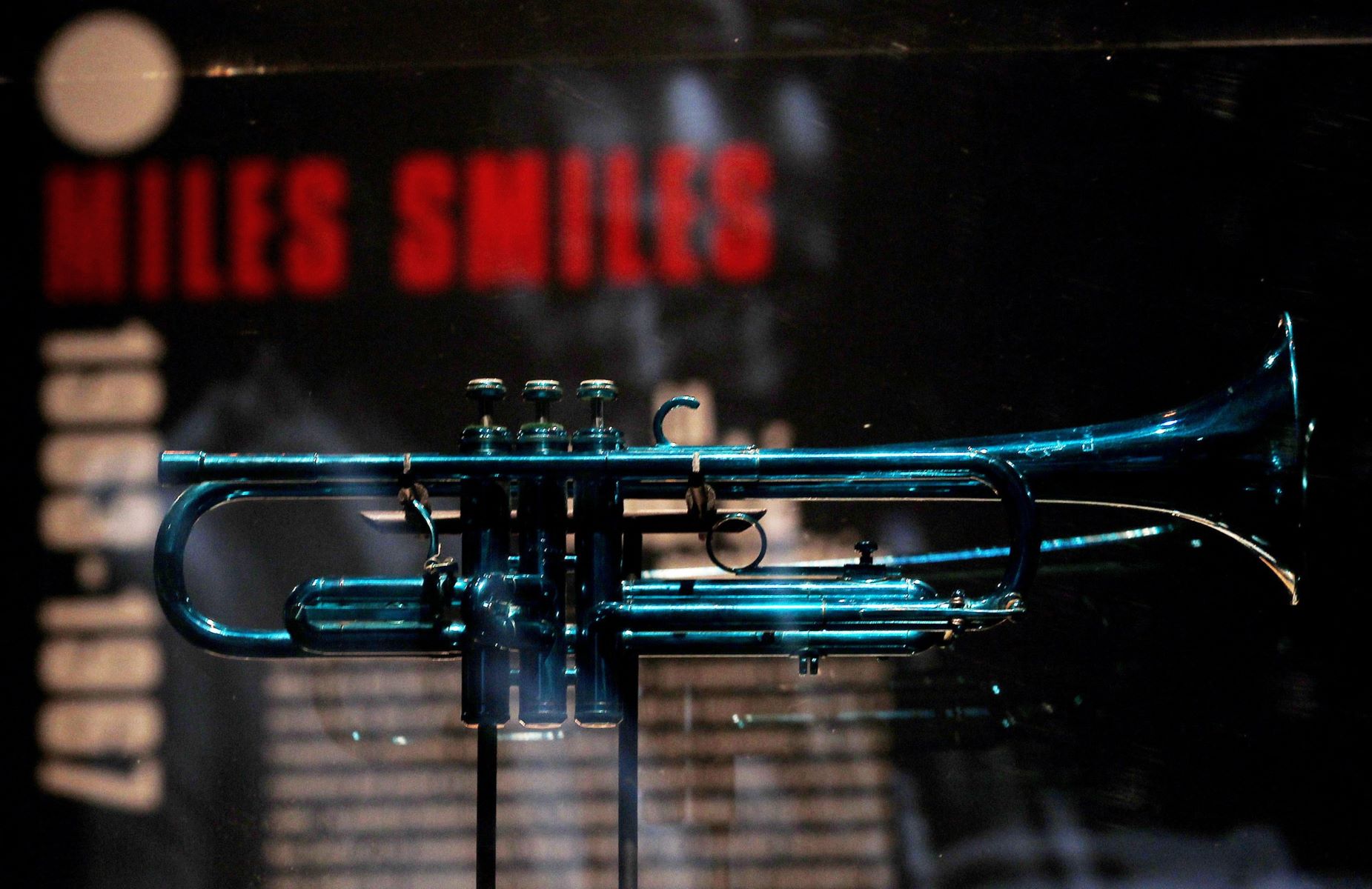

Jazz
How To Solo In Jazz
Modified: January 22, 2024
Learn how to solo in jazz with expert tips and techniques. Master the art of improvisation and take your jazz skills to the next level.
(Many of the links in this article redirect to a specific reviewed product. Your purchase of these products through affiliate links helps to generate commission for AudioLover.com, at no extra cost. Learn more)
Table of Contents
- Introduction
- Understanding Jazz Soloing
- Building a Strong Melodic Foundation
- Exploring Rhythmic Concepts
- Mastering Jazz Scales and Modes
- Utilizing Chord Substitutions
- Developing Improvisational Techniques
- Creating Dynamic Phrases and Musical Ideas
- Study and Transcribe Jazz Solos
- Practicing with Backing Tracks
- Conclusion
Introduction
Jazz is a genre of music that exudes improvisation and creativity. At the heart of jazz lies the art of soloing, which allows musicians to express their individuality and interpret the music in their own unique way. Whether you’re a seasoned jazz player or just starting out, mastering the art of soloing is crucial to becoming a skilled jazz musician.
In this article, we will delve into the world of jazz soloing, exploring the techniques and concepts that will help you take your improvisation skills to the next level. From building a strong melodic foundation to exploring rhythmic concepts, mastering jazz scales and modes, and utilizing chord substitutions, we will cover it all. Along the way, we will also discuss the importance of studying and transcribing jazz solos, practicing with backing tracks, and developing improvisational techniques that will help you create dynamic phrases and musical ideas.
While jazz soloing may seem daunting at first, with dedication and practice, you can unlock a world of musical possibilities. So, grab your instrument and get ready to embark on a journey of self-expression and musical exploration. Whether you play the saxophone, trumpet, guitar, or any other instrument, the tips and techniques in this article will guide you on your path to becoming a confident and captivating jazz soloist.
Understanding Jazz Soloing
Jazz soloing is an intricate art form that involves expressing oneself through improvisation within the context of a jazz composition. To truly understand jazz soloing, it’s important to grasp the underlying musical concepts and structures that define the genre.
At the core of jazz soloing is the concept of “playing changes.” This refers to navigating through the chord progressions of a tune, highlighting the harmonic structure with melodic lines and rhythmic ideas. Understanding the chord progressions and the relationships between chords is essential for creating meaningful and engaging jazz solos.
Additionally, jazz soloing heavily relies on the use of scales and modes. Familiarizing yourself with commonly used scales such as the major scale, minor scale, and blues scale is essential. Furthermore, exploring modes such as the Dorian, Mixolydian, and altered scales can add depth and sophistication to your solos.
Rhythm also plays a crucial role in jazz soloing. Jazz is known for its syncopated rhythms, swing feel, and the ability to play “outside” the traditional time frame. Incorporating rhythmic variations, accents, and offbeat phrasing can add excitement and interest to your solos.
Another important aspect of jazz soloing is the concept of call and response. This technique involves creating musical phrases that engage in a conversation-like exchange with other band members or the accompaniment. This dynamic interaction adds a storytelling element to your solos and keeps the audience engaged.
It’s also important to note that jazz soloing is not solely about showcasing technical prowess. While technique is certainly important, the true essence of jazz soloing lies in the ability to express emotion, tell a story, and connect with the listener on a deeper level. It’s about conveying your musical ideas and personal voice through your instrument.
By understanding and incorporating these fundamental elements of jazz soloing, you can begin to develop your own unique style and approach. Remember, jazz soloing is a journey of self-expression, and the more you explore and experiment, the more your own musical voice will emerge.
Building a Strong Melodic Foundation
When it comes to jazz soloing, building a strong melodic foundation is key. A melodic foundation is what gives your solos structure, coherence, and a sense of musical direction. It allows you to create memorable and engaging solos that captivate the listener.
To build a strong melodic foundation, it’s important to develop a solid understanding of melody and phrasing. Melody is the heart and soul of any musical composition, and it serves as the basis for improvisation. Spend time studying and analyzing the melodies of jazz standards and iconic solos, and take note of how they are constructed.
One effective technique is to start by playing and analyzing the melodies of jazz standards. Pay attention to the contour, rhythm, and intervallic leaps in the melodies. This will help you internalize the melodic language of jazz and give you a starting point for creating your own melodic ideas.
In addition, focus on developing strong phrasing in your solos. Phrasing refers to how you shape and articulate your musical ideas. Experiment with different lengths, dynamics, and articulations to create variety and interest in your solos. Remember to give your solos room to breathe by incorporating rests and pauses.
Another aspect to consider is the use of motifs. Motifs are short melodic phrases or ideas that can be repeated, varied, and developed throughout your solo. They add a sense of cohesion and unity to your improvisation. Take the time to explore different motifs and see how they can be woven into your soloing.
Furthermore, learning to play jazz ballads is an excellent way to develop your melodic skills. Ballads often require a delicate touch and a strong sense of phrasing. Playing ballad melodies and crafting compelling solos will not only enhance your melodic foundation but also improve your overall musicality.
Lastly, don’t be afraid to experiment and take risks in your solos. The beauty of jazz is the freedom to explore and push boundaries. Allow your melodic foundation to be a springboard for creativity, and embrace the spontaneous moments that arise in your improvisation.
By focusing on building a strong melodic foundation, you will develop the skills necessary to create captivating and memorable solos. Remember to study and analyze melodies and solos, develop strong phrasing, explore motifs, and embrace experimentation. With time and practice, you will find your melodic voice and elevate your jazz soloing to new heights.
Exploring Rhythmic Concepts
In jazz, rhythm is a driving force that adds energy, swing, and excitement to your soloing. Exploring different rhythmic concepts is vital to creating dynamic and engaging jazz solos.
One fundamental concept to explore is swing feel. Jazz is known for its distinctive swing rhythm, characterized by syncopation and a sense of forward momentum. Practice playing eighth notes with a swung feel, emphasizing the offbeats, to internalize the groove and develop your sense of swing.
Syncopation is another important rhythmic concept in jazz soloing. It involves accenting or emphasizing offbeats, creating unexpected and exciting rhythmic patterns. Experiment with rhythmic accents, skips, and unexpected placements to add syncopation to your solos. The goal is to create tension and release within your improvisation.
Polyrhythms and cross-rhythms are also worth exploring. Polyrhythms involve playing two or more rhythmic patterns simultaneously, while cross-rhythms refer to playing contrasting rhythmic patterns against each other. Adding these rhythmic complexities to your solos can create a sense of tension and add an element of surprise.
Another technique to incorporate into your improvisation is rhythmic displacement. This involves shifting the placement of a rhythmic pattern by a certain number of beats. By playing with rhythmic displacement, you can add variation and interest to your solos, keeping the listener engaged and on their toes.
Don’t be afraid to experiment with different rhythmic ideas and feel free to borrow rhythmic patterns from other musicians or genres. The goal is to expand your rhythmic vocabulary and add texture and excitement to your solos.
Furthermore, exploring odd time signatures can add depth and complexity to your jazz solos. Jazz compositions often venture beyond the standard 4/4 time signature, such as playing in 5/4, 7/4, or even 9/8. Practicing and improvising in different time signatures will challenge your rhythmic sense and broaden your improvisational capabilities.
Remember, rhythm is a powerful tool in jazz. By exploring various rhythmic concepts, you can infuse your solos with energy, groove, and a compelling sense of musicality. Take the time to study swing feel, syncopation, polyrhythms, cross-rhythms, and odd time signatures, and incorporate them into your solos. The result will be captivating jazz improvisation that leaves a lasting impression on both you and your audience.
Mastering Jazz Scales and Modes
When it comes to jazz soloing, having a strong command of scales and modes is essential. These musical tools provide the foundation for constructing melodic lines that fit harmonically within the context of a jazz composition.
One of the most commonly used scales in jazz is the major scale. This seven-note scale is the building block for many other scales and modes. Practice playing the major scale in all keys and explore different ways of playing it, such as starting on different notes or playing it in different positions on your instrument.
In addition to the major scale, the modes derived from it are also crucial in jazz improvisation. Modes such as the Dorian, Mixolydian, and Lydian can add color and versatility to your solos. Spend time learning these modes and practice improvising over different chords using them.
Another important scale to master in jazz is the minor scale. In particular, the melodic minor scale and its modes are widely used in jazz improvisation. These scales provide a unique and sophisticated sound that adds depth and complexity to your solos.
Furthermore, exploring pentatonic scales is beneficial for jazz soloing. Pentatonic scales offer a concise and versatile set of notes that can be used to create melodic and bluesy lines. Practice playing and improvising with both major and minor pentatonic scales to develop your versatility and melodic ideas.
As you delve deeper into jazz improvisation, it’s crucial to understand how to apply these scales and modes to different chord progressions. Learn to identify the chords within a progression and select scales or modes that harmonize with them. This will allow you to create melodic lines that complement the underlying harmony.
Transposing and transcribing jazz solos are valuable exercises for mastering scales and modes. By transposing solos into different keys, you will gain a deeper understanding of how scales and modes function in different harmonic contexts. Transcribing solos of your favorite jazz musicians will also expose you to various ways of incorporating scales and modes into improvisation.
Remember, mastering jazz scales and modes is not just about memorizing patterns and fingerings. It’s about internalizing their sound, understanding their relationship to chords, and using them as a tool for self-expression. Practice diligently, experiment with different scales and modes, and incorporate them naturally into your jazz soloing. With time and dedication, you will build a strong foundation for improvisation and unlock endless possibilities in your jazz solos.
Utilizing Chord Substitutions
Chord substitutions are a powerful tool in jazz soloing, allowing you to add variety, tension, and harmonic interest to your improvisation. By replacing a chord in a progression with a different chord, you can create new melodic possibilities and fresh harmonic colors.
One common chord substitution technique is the tritone substitution. In this technique, you substitute a dominant 7th chord with another dominant 7th chord located a tritone (or augmented 4th) away. For example, you can substitute a G7 chord with a Db7 chord. This substitution creates chromatic movement and adds tension and intrigue to your solos.
Another chord substitution technique is the diminished chord substitution. Diminished chords are symmetrical chords that can be substituted for dominant 7th chords. For example, instead of playing a G7 chord, you can substitute it with a Bb diminished chord. This substitution creates a unique and mysterious sound, perfect for adding tension to your solos.
Additionally, altering the quality of chords is another way to use chord substitutions. For instance, you can replace a major chord with a minor chord or vice versa. This altered quality creates unexpected harmonic changes and provides a fresh canvas for your improvisation.
Exploring upper structure triads is another approach to chord substitutions. Upper structure triads are derived from the extensions or alterations of a chord. By superimposing triads on top of a basic chord, you can create rich and colorful harmonies. This technique adds complexity and interest to your solos.
When utilizing chord substitutions, it’s important to understand the function of the original chord within the progression. By replacing a chord with a suitable substitute, you maintain the overall harmonic flow of the composition while injecting your own creative twist.
Experimenting with different chord substitution techniques will enhance your improvisation skills and add depth to your solos. Focus on understanding the theory behind each substitution and practice applying them to different chord progressions. Transcribing and analyzing solos of jazz greats will also expose you to the creative use of chord substitutions and inspire your own improvisational approach.
Remember, chord substitutions are a tool to expand your harmonic palette and unleash your creativity in jazz soloing. Mastering the art of utilizing chord substitutions will open up new possibilities and take your jazz improvisation skills to the next level.
Developing Improvisational Techniques
Developing strong improvisational techniques is essential for jazz soloing. It involves the ability to think on your feet, react to the musical environment, and express your musical ideas in real-time. To hone your improvisational skills, consider the following techniques:
Listening and Transcribing: One of the most effective ways to develop your improvisational skills is by listening to and transcribing the solos of jazz masters. Choose musicians whose style resonates with you and study their phrasing, melodic ideas, and rhythmic concepts. Transcribing solos trains your ear, exposes you to different improvisational approaches, and helps you internalize the jazz language.
Practice Patterns and Licks: Patterns and licks are short melodic phrases that you can use as vocabulary in your improvisation. Practice different patterns and licks in different keys and positions on your instrument. By internalizing these musical patterns and incorporating them into your playing, you’ll have a solid foundation to build upon during your improvisation.
Experiment with Different Stylistic Approaches: Jazz is an incredibly diverse genre, with various sub-styles such as bebop, cool jazz, fusion, and more. Take the time to explore different stylistic approaches and immerse yourself in the unique characteristics of each style. Experimenting with different styles will broaden your musical palette and allow you to incorporate different flavors into your improvisation.
Develop Your Ear Training: A well-developed ear is a valuable asset for any jazz musician. Practice ear training exercises such as identifying intervals, chords, and chord progressions. This will help you recognize musical patterns and navigate through chord changes effortlessly during your improvisation.
Learn Voicings and Arpeggios: Understanding chord voicings and arpeggios is essential for soloing over chords and outlining their harmonic structure. Learn different voicings for chords and practice arpeggios in different keys. This will enable you to create melodic lines that harmonically fit within the underlying chord progression.
Experiment with Different Articulations and Dynamics: Articulations and dynamics are critical in conveying expression and emotion in your solos. Experiment with different articulations, such as staccato, legato, and accents, to bring variety to your playing. Likewise, explore different dynamics to create tension and release in your improvisation.
Play with Other Musicians: Improvising with other musicians is an invaluable experience. Seek out opportunities to jam with fellow jazz musicians or join jazz ensembles. It will sharpen your ability to react and interact with other players, while enhancing your improvisational skills through collaborative musical conversations.
Remember, developing improvisational techniques is an ongoing process. Dedicate regular practice time to explore these techniques and apply them to your playing. As you continue to develop your improvisational skills, you’ll gain confidence, find your unique voice, and have the freedom to communicate your musical ideas fluently in the realm of jazz soloing.
Creating Dynamic Phrases and Musical Ideas
Creating dynamic phrases and musical ideas is crucial for captivating and engaging jazz solos. It’s the art of crafting melodic lines that not only showcase your technical abilities but also convey emotion and capture the listener’s attention. Here are some tips to help you develop dynamic phrases and musical ideas:
Vary Rhythm and Note Lengths: Playing with rhythmic variation is a powerful way to add interest and dynamics to your solos. Experiment with different rhythmic patterns, syncopations, and accents. Vary the lengths of your notes – play some short and staccato, while others long and sustained. This rhythmic diversity brings life and energy to your phrases.
Utilize Space and Silence: Don’t be afraid to embrace silence and use it strategically in your solos. Leaving space in your phrases allows the music to breathe, creating tension and anticipation. Pausing between phrases can build suspense and make the next musical idea even more impactful.
Create Contrast: Contrast is key to creating dynamic and memorable solos. Alternate between fast and slow passages, loud and soft dynamics, and high and low registers of your instrument. Contrasting sections within your solo keeps the listener engaged and adds excitement and variety.
Use Intervallic Leaps and Arpeggios: Incorporating intervallic leaps and arpeggios in your phrases adds melodic interest and complexity. Experiment with skipping intervals and arpeggiating chords to create unique and captivating musical lines. This technique adds movement and shape to your solos.
Develop Motifs and Themes: A motif or theme is a short melodic idea that can be repeated, varied, and developed throughout your solos. Developing motifs and themes gives your improvisation a cohesive and unified structure. When used strategically, motifs can create a musical narrative that connects your phrases and adds a sense of storytelling to your solos.
Express Emotion: Jazz is about expressing emotions and connecting with the audience. Use your solos as a means to convey your feelings. Whether it’s joy, melancholy, excitement, or contemplation, focus on playing with conviction and imbue your phrases with the appropriate emotional nuances.
Experiment with Different Articulations: Articulations play a significant role in shaping the character of your phrases. Explore different articulations such as legato, staccato, and accents. Altering articulations gives your phrases depth and texture, enhancing their overall impact and expressiveness.
Transcribe and Analyze Solos: Transcribing and analyzing solos by jazz masters is an effective way to gain insights and inspiration for creating dynamic phrases and musical ideas. Pay attention to how they build their solos, their use of dynamics, and the way they navigate chord progressions.
Creating dynamic phrases and musical ideas requires time, experimentation, and a deep understanding of your instrument and the jazz language. By incorporating these techniques and continuously expanding your musical vocabulary, you’ll develop a unique improvisational style that captivates and resonates with listeners.
Study and Transcribe Jazz Solos
To truly master jazz soloing, studying and transcribing jazz solos is an invaluable practice. It allows you to immerse yourself in the musical language of jazz, gain insights from the masters, and develop a deep understanding of improvisation. Here’s why studying and transcribing jazz solos is essential:
Develops Ear Training: Transcribing solos involves actively listening and deciphering the notes, rhythms, and nuances of a jazz musician’s improvisation. This process helps train your ear to recognize melodies, chord progressions, and improvisational techniques. It sharpens your ability to identify intervals, harmonies, and the unique musical language of jazz.
Internalizes Jazz Vocabulary: Jazz solos are filled with melodic and harmonic ideas specific to the genre. By transcribing solos, you not only learn what notes to play but also how to phrase them authentically. It exposes you to different scales, modes, arpeggios, and rhythmic patterns that make up the jazz vocabulary. Internalizing this vocabulary enables you to incorporate it naturally into your own improvisation.
Expands Improvisational Techniques: Studying and transcribing jazz solos exposes you to a variety of improvisational approaches. You can learn different stylistic nuances, rhythmic subdivisions, articulations, and other techniques employed by great jazz musicians. It broadens your improvisational toolkit and opens new possibilities for creativity in your solos.
Enhances Understanding of Harmony: Jazz solos unfold over specific chord progressions. By transcribing solos, you gain a deeper understanding of how musicians navigate these chord changes, select notes, and create melodic lines that fit harmonically. It provides insight into the relationship between scales, modes, and arpeggios with various chords, empowering you to create more harmonically rich solos.
Develops Style and Personal Voice: When you transcribe solos, you’re not just copying note for note. By studying the nuances, phrasing, and subtle variations, you gain an understanding of the style and personality of the musician you’re transcribing. This knowledge helps you develop your own unique voice, incorporating the influences of the great jazz musicians while expressing your own musical ideas.
Improves Timing and Rhythm: Jazz is renowned for its rhythmic complexity and swing feel. By transcribing solos, you develop a sense of timing and internalize the rhythmic nuances of jazz. You learn how to articulate phrases, use syncopation, and create rhythmic interest in your solos.
When transcribing solos, start with simpler phrases and gradually progress to more complex solos. Listen to different jazz musicians from various eras and styles to diversify your musical influences. Utilize transcription software or slow down recordings to aid in deciphering intricate passages.
Remember, transcribing solos is an ongoing process. Take the time to study the solos thoroughly, analyze them, and incorporate what you learn into your own playing. It’s an investment in your musical growth and a pathway to becoming a more skilled and expressive jazz musician.
Practicing with Backing Tracks
Practicing with backing tracks is an excellent way to improve your jazz soloing skills and enhance your overall musicianship. Backing tracks provide a simulated musical environment, allowing you to practice improvisation in the context of a full band. Here are several reasons why incorporating backing tracks into your practice routine is beneficial:
Develops Timing and Groove: Playing along with a well-structured backing track helps develop your sense of timing and groove. It allows you to lock in with the rhythm section, stay in sync, and internalize the pulse and feel of the music. This is crucial for creating a solid foundation and maintaining a cohesive sound in your solos.
Improves Chord Recognition and Progression Navigation: Backing tracks provide a platform to improve your ability to recognize chords and navigate through chord progressions. As you solo over the backing track, you’ll develop a better understanding of how scales, arpeggios, and melodic ideas fit within the harmonic context. It enhances your ability to make informed melodic choices and create musical lines that fluently connect with the underlying chords.
Enhances Ear Training: Backing tracks allow you to practice ear training by providing a musical context in which to apply your listening skills. You can focus on identifying melodies, chord changes, and intervals within the backing track. This active listening helps train your ear to recognize musical patterns and enhances your overall musicality.
Fosters Musical Interaction: Playing with backing tracks helps develop your ability to interact musically with other musicians virtually. It provides a realistic band experience, allowing you to practice call and response, trading solos, and establishing a musical dialogue. This interaction enhances your improvisational abilities and prepares you for live performances and jam sessions.
Fuels Creativity and Experimentation: Backing tracks offer a platform for creativity and experimentation. They provide a canvas for you to explore different improvisational techniques, melodic ideas, and rhythmic concepts. You can try out new scales, modes, and rhythmic patterns in a supportive musical setting, pushing the boundaries of your musical expression.
Prepares for Performance: Practicing with backing tracks prepares you for real-life performance situations. It helps build your confidence, as you learn to navigate through different musical sections, transitions, and dynamics. It allows you to refine your soloing techniques, ensuring that you’re well-prepared and comfortable when playing with a live band or in a jam session.
When practicing with backing tracks, start with simpler tunes and progress to more complex compositions. Focus on different styles, tempos, and chord progressions to broaden your musical versatility. Maintain an open mind, embracing the challenge of improvising over various musical contexts.
Remember, consistent practice with backing tracks is key. Set aside dedicated practice time to work on different aspects of your soloing, such as rhythm, phrasing, harmonic exploration, and improvisational techniques. With every practice session, you’ll notice significant improvements in your jazz soloing prowess.
Conclusion
Mastering the art of jazz soloing is a lifelong journey that requires dedication, practice, and a deep appreciation for the expressive and improvisational nature of the genre. By understanding the foundational elements such as building a strong melodic foundation, exploring rhythmic concepts, mastering jazz scales and modes, utilizing chord substitutions, developing improvisational techniques, creating dynamic phrases and musical ideas, studying and transcribing jazz solos, and practicing with backing tracks, you will steadily enhance your jazz soloing skills and develop your unique musical voice.
Through studying the solos of jazz legends, practicing with backing tracks, and exploring various improvisational techniques, you’ll expand your musical vocabulary and gain a deeper understanding of the jazz language. Remember to experiment, take risks, and embrace your own creativity. Jazz is a constantly evolving genre, and your individuality and unique perspective are what truly make your solos stand out.
As you embark on this journey of jazz soloing, stay passionate and curious. Listen to a wide range of jazz musicians, attend live performances, and surround yourself with fellow jazz enthusiasts. Immerse yourself in the music, absorb the influence of the greats, and let their legacy inspire your own musical exploration.
Keep in mind that jazz soloing is about more than just technical proficiency; it’s about telling a story, connecting with the audience, and expressing your emotions through your instrument. So, continue to cultivate your musicality, strive for authenticity, and share your passion for jazz through your captivating and soulful solos.
With consistent practice, a desire to learn, and an unwavering love for the genre, you have the potential to become a skilled and compelling jazz soloist. So, pick up your instrument, dive into the world of jazz, and let your improvisational spirit soar. The stage is yours, and the possibilities are endless.











